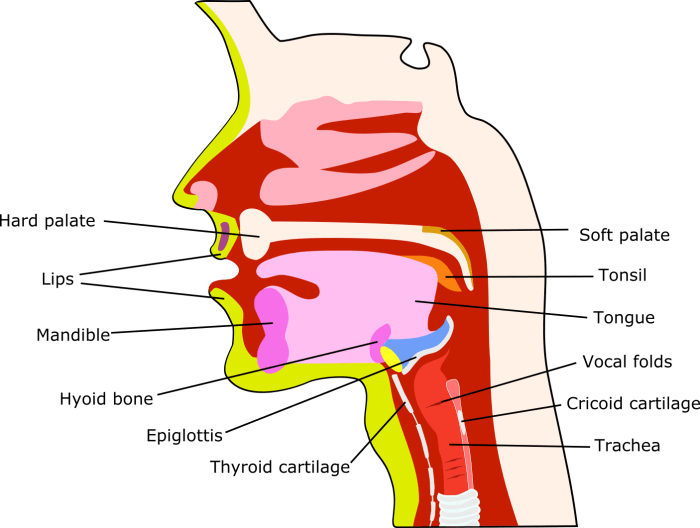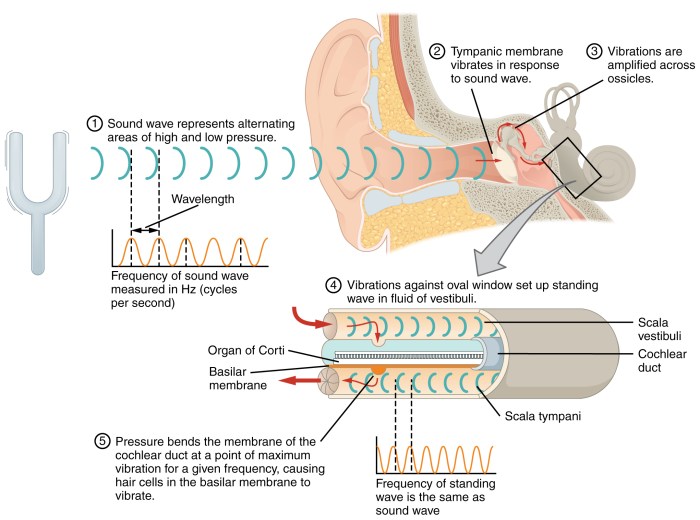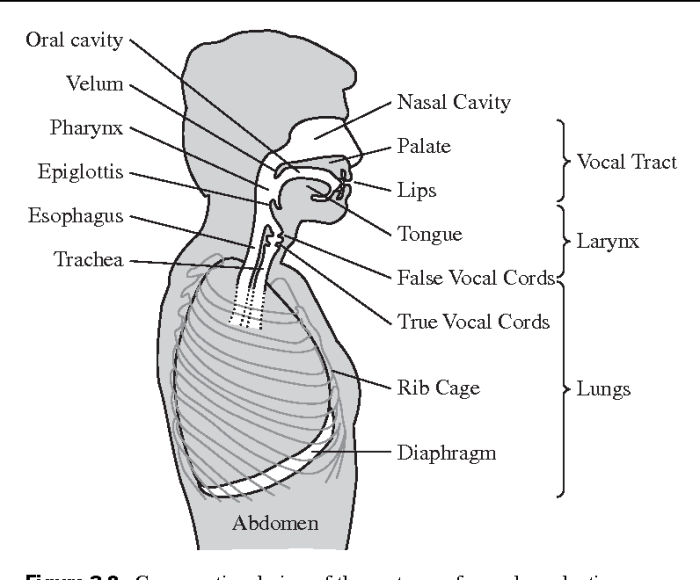The anatomy and physiology of speech and hearing are fundamental to human communication, enabling us to express ourselves and perceive the world around us. This fascinating field encompasses the intricate structures and processes involved in producing and interpreting sound, offering insights into the complexities of human interaction.
From the delicate mechanisms of the ear that capture sound waves to the intricate movements of the vocal cords that produce speech, this comprehensive exploration delves into the anatomy and physiology of speech and hearing, unraveling the secrets of human communication.
Anatomy of the Speech and Hearing System

The anatomy of the speech and hearing system is a complex network of structures that work together to produce and receive sound. It can be divided into three main sections: the outer ear, the middle ear, and the inner ear.
Outer Ear
- Pinna: The visible part of the ear that collects sound waves.
- Ear canal: A tube that leads from the pinna to the middle ear.
- Eardrum: A thin membrane that separates the outer ear from the middle ear.
Middle Ear, Anatomy and physiology of speech and hearing
- Ossicles: Three small bones (malleus, incus, and stapes) that transmit sound vibrations from the eardrum to the inner ear.
- Eustachian tube: A tube that connects the middle ear to the back of the throat, equalizing air pressure on both sides of the eardrum.
Inner Ear
- Cochlea: A spiral-shaped tube that contains the auditory receptors.
- Vestibular system: A group of structures that sense balance and spatial orientation.
The anatomy of the larynx, pharynx, and oral cavity is also important for speech production. The larynx, or voice box, contains the vocal cords that vibrate to produce sound. The pharynx is the throat, and the oral cavity is the mouth.
Physiology of Speech and Hearing

Sound Transmission
Sound waves enter the outer ear and travel through the ear canal to the eardrum. The eardrum vibrates in response to the sound waves, and these vibrations are transmitted to the ossicles in the middle ear. The ossicles amplify the vibrations and transmit them to the cochlea in the inner ear.
Sound Transduction
The cochlea is filled with fluid and lined with hair cells. When the ossicles vibrate, they create waves in the fluid, which cause the hair cells to move. The movement of the hair cells generates electrical signals that are transmitted to the brain via the auditory nerve.
Neural Pathways
The auditory nerve carries the electrical signals from the cochlea to the brainstem and then to the auditory cortex in the temporal lobes of the brain. The auditory cortex interprets the signals and allows us to perceive sound.
Speech Production
Speech production involves three main processes: respiration, phonation, and articulation.
- Respiration: The lungs provide the airflow that is necessary for speech.
- Phonation: The vocal cords in the larynx vibrate to produce sound.
- Articulation: The tongue, lips, and teeth shape the sound produced by the vocal cords to create speech sounds.
Disorders of Speech and Hearing
Speech Disorders
Speech disorders are conditions that affect the production of speech. Common speech disorders include:
- Stuttering: A disorder characterized by involuntary repetitions or prolongations of sounds, syllables, or words.
- Dysarthria: A disorder that affects the muscles used for speech, resulting in difficulty with articulation.
Hearing Disorders
Hearing disorders are conditions that affect the ability to hear. Common hearing disorders include:
- Hearing loss: A partial or complete loss of hearing.
- Tinnitus: A ringing or buzzing sound in the ears.
Treatment of Speech and Hearing Disorders

Speech Disorders
The treatment of speech disorders typically involves speech therapy. Speech therapy can help people with speech disorders improve their speech production skills.
Hearing Disorders
The treatment of hearing disorders depends on the type and severity of the disorder. Treatment options may include:
- Hearing aids: Devices that amplify sound and improve hearing.
- Cochlear implants: Devices that bypass the damaged parts of the inner ear and stimulate the auditory nerve.
Role of Audiologists and Speech-Language Pathologists
Audiologists and speech-language pathologists are healthcare professionals who specialize in the diagnosis and treatment of speech and hearing disorders.
Clinical Applications

Imaging Techniques
Imaging techniques, such as MRI and CT scans, can be used to diagnose speech and hearing disorders. These techniques can provide detailed images of the structures of the speech and hearing system, which can help doctors identify abnormalities.
Electrophysiological Tests
Electrophysiological tests, such as audiometry and tympanometry, can be used to assess hearing function. These tests measure the response of the auditory system to sound stimuli, which can help doctors diagnose hearing disorders.
FAQ Summary: Anatomy And Physiology Of Speech And Hearing
What are the main structures of the outer ear?
The outer ear consists of the auricle (visible part), external auditory canal, and tympanic membrane (eardrum).
What is the function of the cochlea?
The cochlea is a spiral-shaped structure in the inner ear that contains the sensory cells responsible for converting sound waves into electrical signals.
What are some common speech disorders?
Common speech disorders include stuttering, dysarthria, and aphasia.
What is the role of audiologists?
Audiologists are healthcare professionals who specialize in the diagnosis and treatment of hearing disorders.